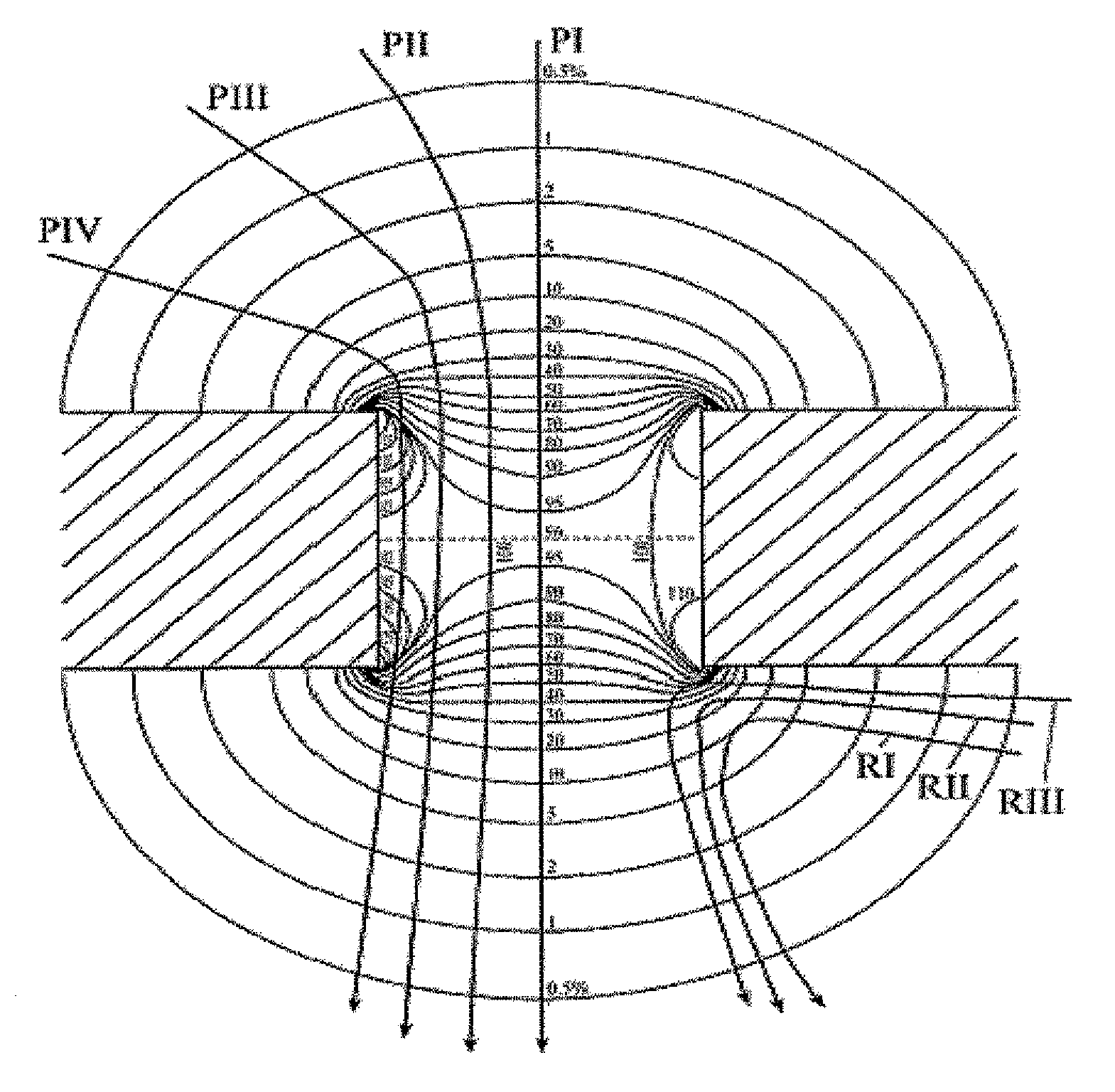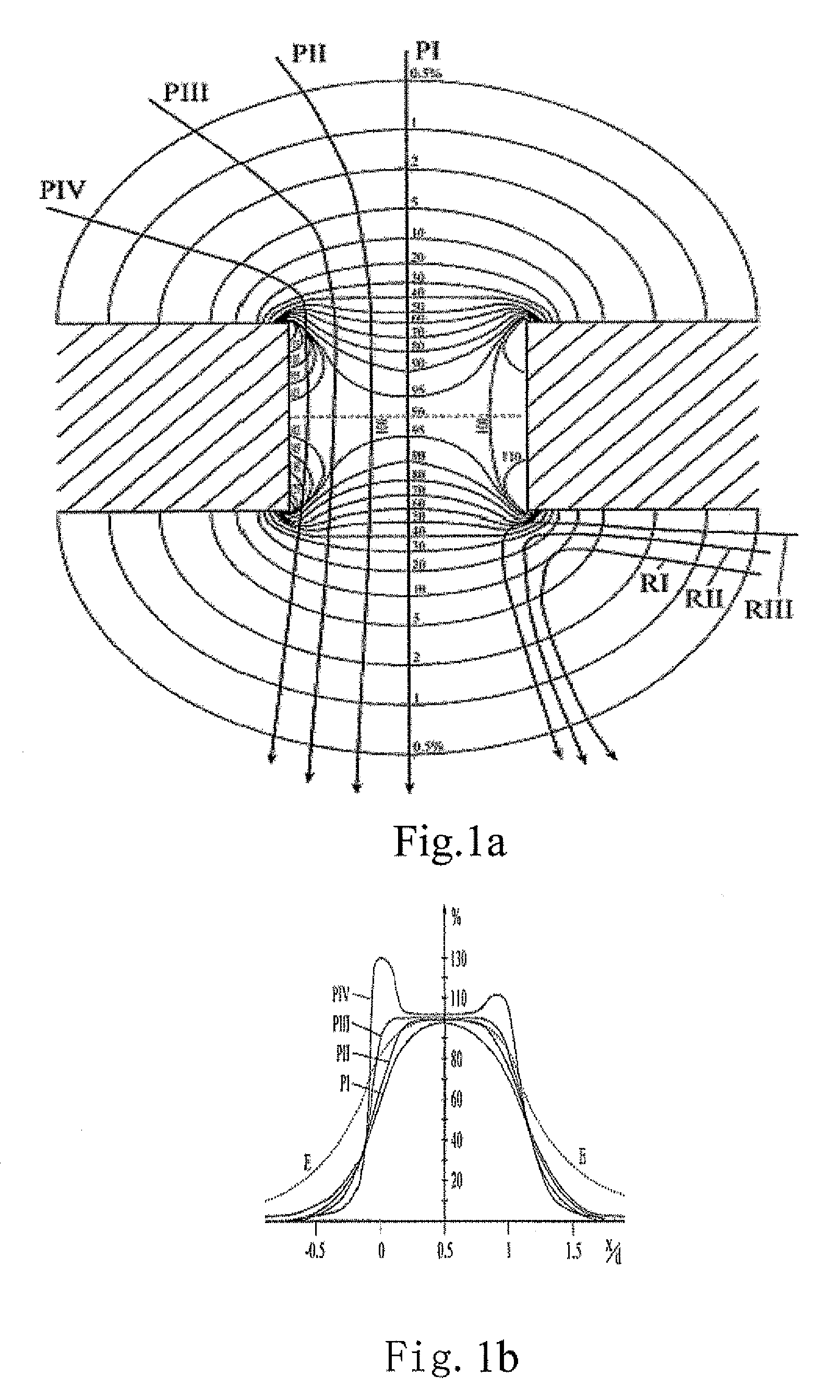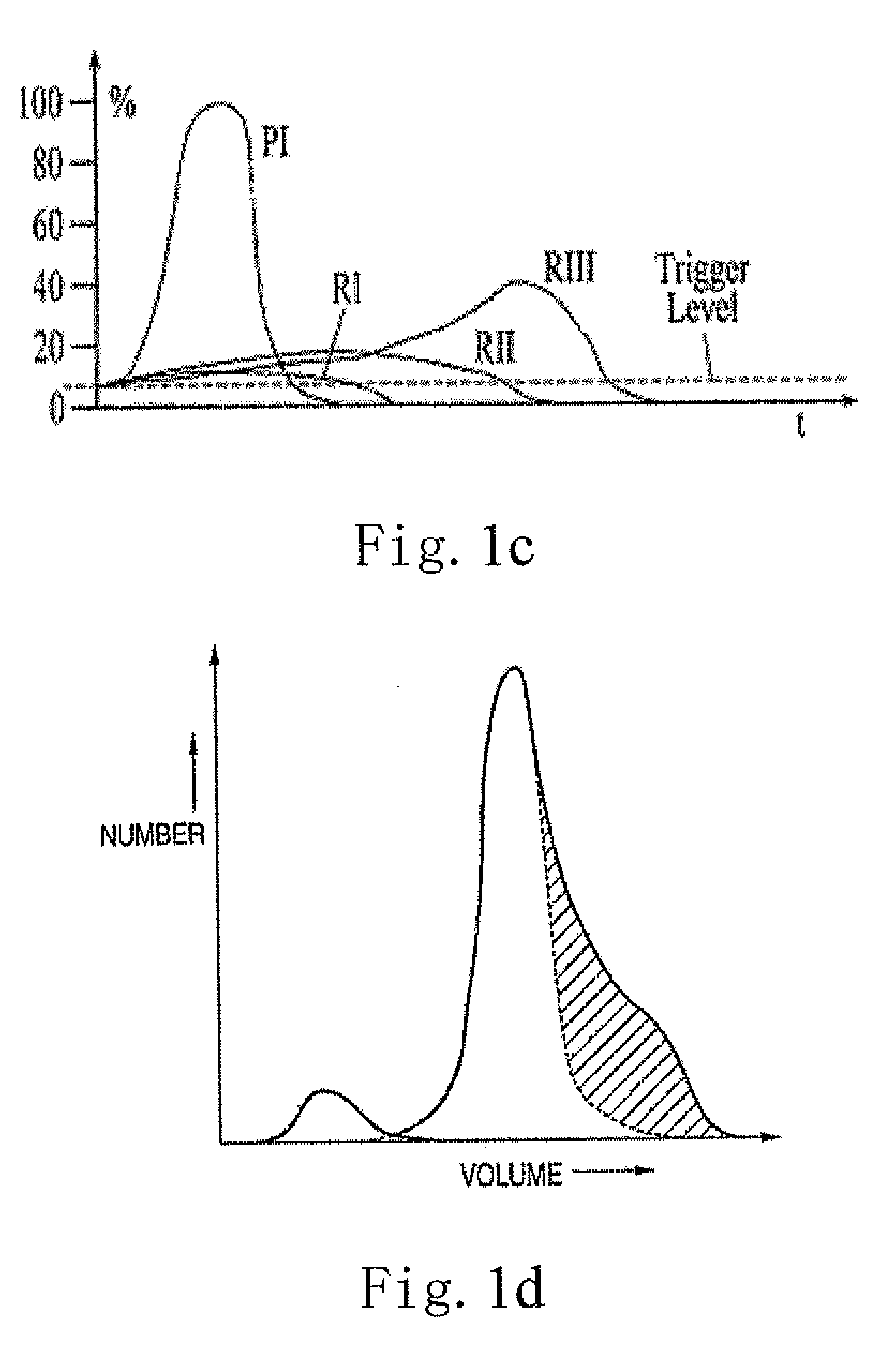Device for determination of parameters of particles in conductive solution and microscopic hole assembly
- Summary
- Abstract
- Description
- Claims
- Application Information
AI Technical Summary
Benefits of technology
Problems solved by technology
Method used
Image
Examples
Embodiment Construction
[0045]Reference will now be made to the figures to describe the present invention in detail.
[0046]The present device for detecting blood cells or other non-conductive particles based on Coulter theory is shown in FIG. 5, which is a block diagram showing the working principles of the detection and counting device. The device includes a microscopic hole sensor assembly 1, a front pool 11A located in front of the microscopic hole assembly 1, and a back pool 11B located behind the microscopic hole assembly 1. The front pool 11A and the back pool 11B are connected via a microscopic hole defined in the microscopic hole assembly 1. Referring to FIG. 6, the back pool 11B has a bugle-shaped distended downstream surface 19. The bottom of the downstream surface 19 is secured to a fixed seat 2.
[0047]A platinum anode electrode 3 is arranged in the front pool 11A, and a cathode electrode 4 is arranged in the back pool 11B. An inlet 5 of a liquid-adding system is mounted above the front pool 11A t...
PUM
| Property | Measurement | Unit |
|---|---|---|
| Thickness | aaaaa | aaaaa |
| Pressure | aaaaa | aaaaa |
| Electric properties | aaaaa | aaaaa |
Abstract
Description
Claims
Application Information
 Login to View More
Login to View More - R&D
- Intellectual Property
- Life Sciences
- Materials
- Tech Scout
- Unparalleled Data Quality
- Higher Quality Content
- 60% Fewer Hallucinations
Browse by: Latest US Patents, China's latest patents, Technical Efficacy Thesaurus, Application Domain, Technology Topic, Popular Technical Reports.
© 2025 PatSnap. All rights reserved.Legal|Privacy policy|Modern Slavery Act Transparency Statement|Sitemap|About US| Contact US: help@patsnap.com



